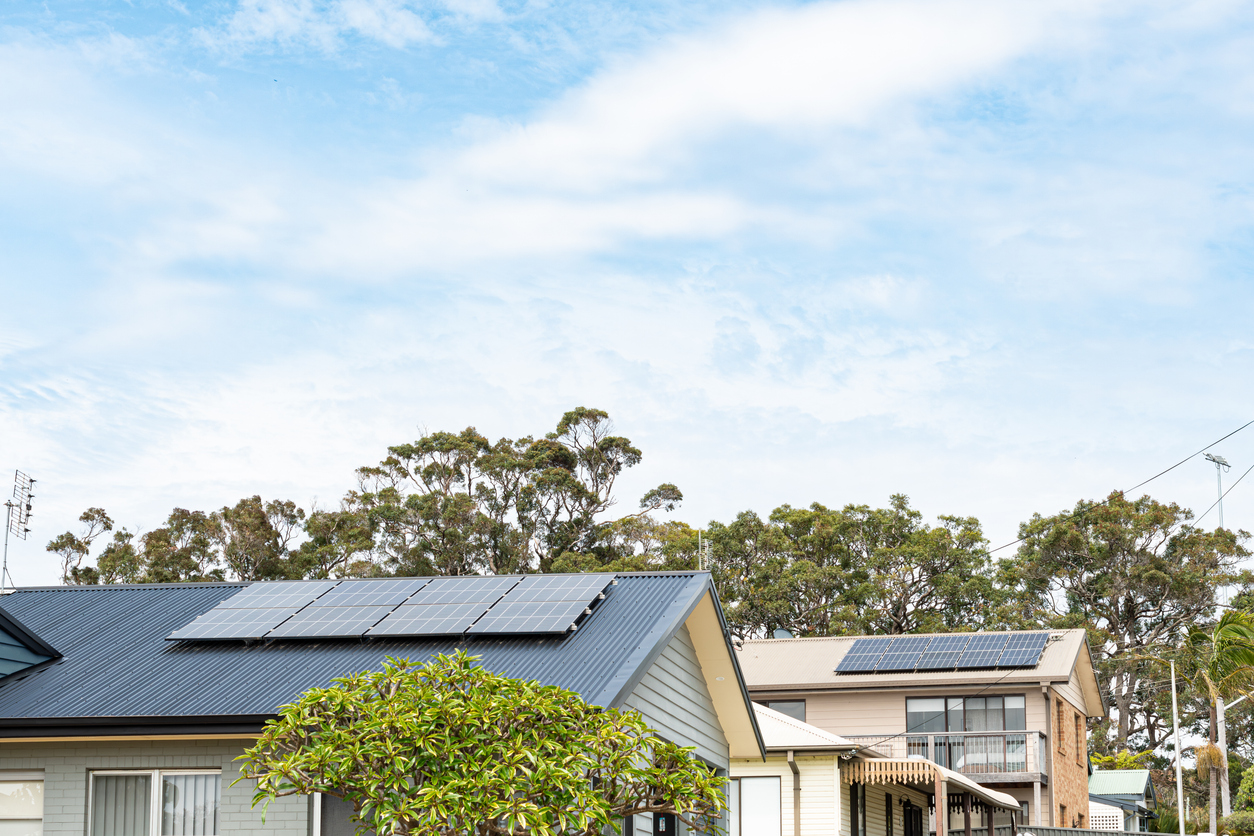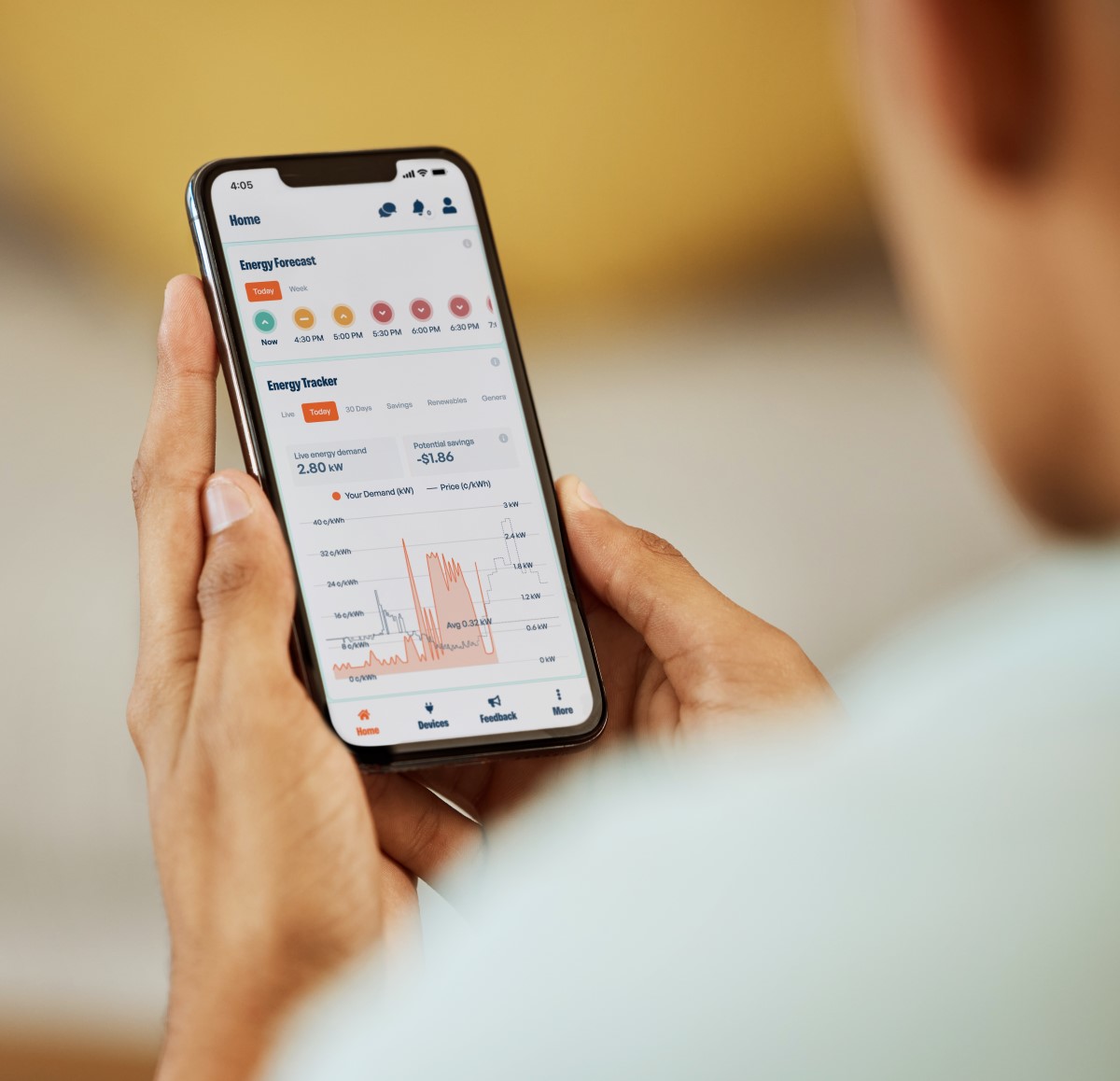
ROOFTOP SOLAR
with Flow Home
Learn more about how your existing solar panels integrate with your Flow Home plan and influence the rate you pay for electricity
How does Flow Home work with
my existing solar panels?
If you have existing solar panels at home (and don’t have a battery or an EV), your experience with Flow Home will likely be different from your experience with other energy retailers, especially if you’re switching from a flat rate.
Flow Home is designed to incentivise customers’ use of electricity at cheaper times of day, when renewable generation reduces wholesale prices. This is typically during the middle of the day, when solar generation is at its peak.
Learn more about wholesale pricesHow could solar affect your Flow Home pricing?
If you have rooftop solar installed, you likely won’t need to use electricity from the grid when power is at its cheapest.
This is important because to calculate your Flow Home pricing, we look at your average usage for the month and adjust your electricity rate based on how closely you’ve matched your usage to cheaper, more renewable times in the grid.
This means it will be harder to reduce your rate each month, as the majority of your grid usage will be during peak periods, at higher prices (which is often generated by fossil fuels).
Using power from the grid during peak periods is typically not cost efficient and will lead to a higher Price Efficiency Adjustment on your bill, which can result in an excess to your base rate.

How to adjust your usage with solar panels
If you’ve already got solar, there are some steps you can take to reduce the impact of your panels on your monthly rate. Your rate is variable, dependent on the size of your solar system, your usage and market prices and conditions.
As a general guide, Flow Home is typically best suited to homes with solar that can:
- Optimise the timing of solar exports to the grid from 5:30-7:30pm, when grid prices are typically at their peak.
- Maximise energy use at home during peak solar generation hours (generally between 10am-4pm) and reduce usage in peak morning and evening periods
To ensure you benefit from Flow Home as a solar customer, we recommend adding a battery to your system. A battery allows you to store any excess solar generation for use – or export – when grid prices are high.

The market is changing – and so are feed-in tariffs
Since the mass adoption of rooftop solar, Australia now produces so much energy during the day that solar feed-in tariffs have dropped dramatically to discourage exporting at these times.
This is causing feed-in tariffs to dwindle across the board, with rates dropping for households and businesses, no matter who their electricity retailer is.
Although the drop in feed-in tariffs has been a shock to many solar owners, simple changes in export timing can still offer an opportunity to improve your costs.
By rewarding exports at peak times with a higher rate, solar households with a battery unlock more earning potential, especially if they can store excess electricity in a battery to export later in the day, or during high price periods.
What feed-in tariff (FiT) does Flow Home offer for solar?
Flow Home customers who joined before December 1 2025 receive a base feed-in tariff of 3.3c/kWh. An adjustment will be made to that rate each month, based on your export habits and how closely they aligned with wholesale market pricing signals that month.
This FiT is based on wholesale prices, designed to give you access to a wider range of pricing. This allows for greater earning potential when you export your stored energy during peak times or grid events. Equally, your rate can be negatively impacted by exporting during times of the day when energy is abundant in the grid – like solar hours during the day.
Using the Flow Power app, you can monitor the market to find the most lucrative times to export and avoid the times when you could be charged.
From December 1 2025, Flow Home will be introducing a new FiT structure to reward energy-savvy exporters.
This will apply automatically for new customers. Existing customers will have the option to switch to the new tariff right away by contacting contact@flowpower.com.au and requesting an upgrade or wait until January to roll onto the new tariff structure.
Under this new structure, the rate for exports will be $0 during off-peak hours.
Optimally timed exports will be rewarded with a competitive bonus rate between 35-45c/kWh, depending on your state, from 5:30-7:30pm every day.
If your household can control when it exports solar, you could earn more for the power you produce.
How to maximise your savings with Flow Home
Use the Flow Power app to check the current price of electricity and forecasts up to a week ahead. It’ll advise you of the best times to use electricity.
Time your exports (solar or battery) for the evening peak to optimise your export earning capacity.
If you have a battery, charge it using your solar panels during the day. Export when the sun goes down and prices rise for the best savings potential.
Questions? We’re here to help
Check out our FAQs for the answers to some of our commonly asked questions or get in touch with our team via the Live Chat icon in the bottom right corner.

